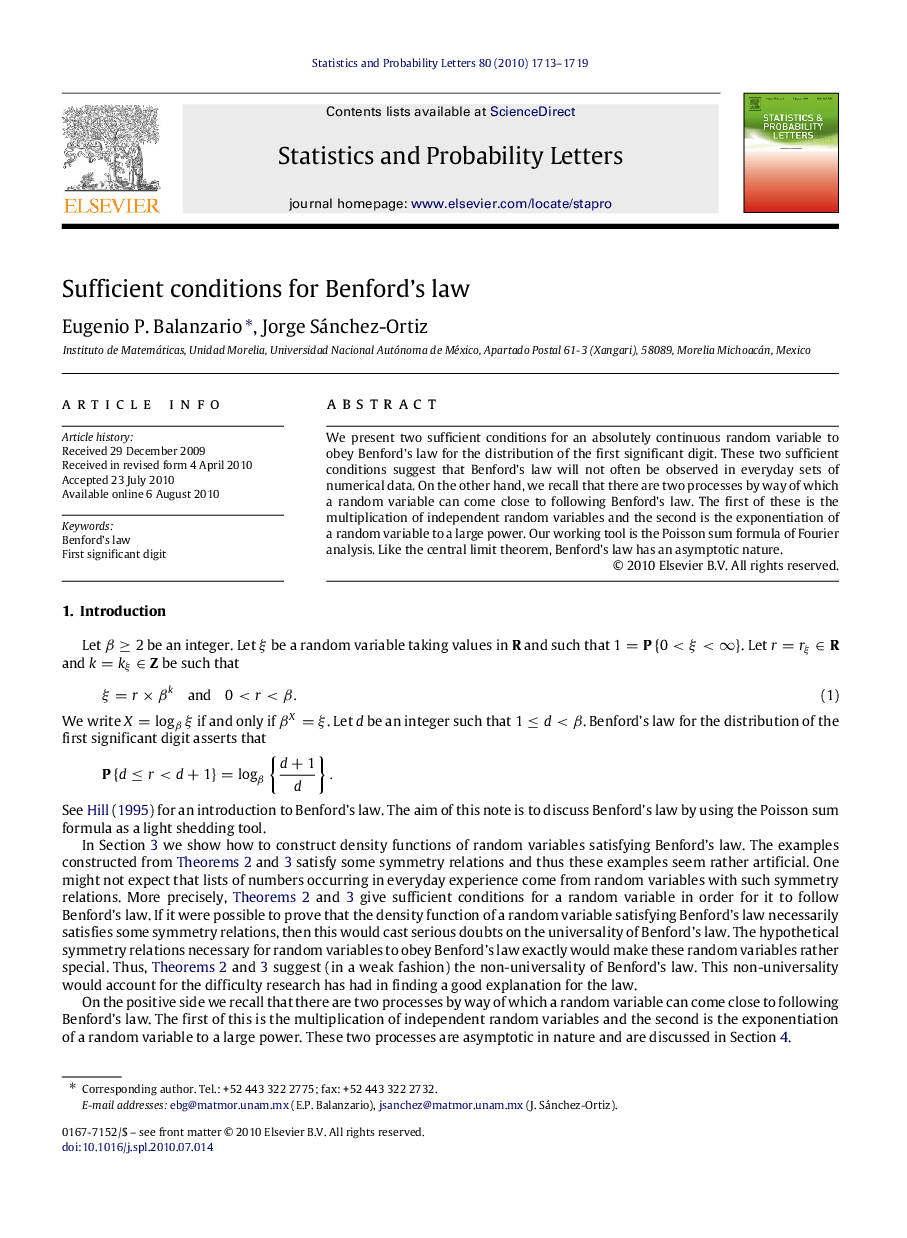| Article ID | Journal | Published Year | Pages | File Type |
|---|---|---|---|---|
| 1152714 | Statistics & Probability Letters | 2010 | 7 Pages |
Abstract
We present two sufficient conditions for an absolutely continuous random variable to obey Benford’s law for the distribution of the first significant digit. These two sufficient conditions suggest that Benford’s law will not often be observed in everyday sets of numerical data. On the other hand, we recall that there are two processes by way of which a random variable can come close to following Benford’s law. The first of these is the multiplication of independent random variables and the second is the exponentiation of a random variable to a large power. Our working tool is the Poisson sum formula of Fourier analysis. Like the central limit theorem, Benford’s law has an asymptotic nature.
Keywords
Related Topics
Physical Sciences and Engineering
Mathematics
Statistics and Probability
Authors
Eugenio P. Balanzario, Jorge Sánchez-Ortiz,
